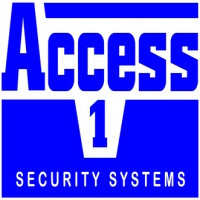Exploring Access Control: The Three Essential Types Explained

Strong 8k brings an ultra-HD IPTV experience to your living room and your pocket.
Access control is a fundamental aspect of security management that determines who is allowed to enter, exit, or use certain resources within an organization. Whether it's physical access to a building, access to confidential data, or permissions for various systems, effective access control mechanisms help safeguard sensitive information and resources from unauthorized access. This article delves into the three essential types of access control: Mandatory Access Control (MAC), Discretionary Access Control (DAC), and Role-Based Access Control (RBAC). Understanding these types is crucial for organizations aiming to implement robust security protocols.
1. Mandatory Access Control (MAC)
Mandatory Access Control (MAC) is a stringent access control model often used in environments where security is paramount, such as government agencies and military organizations. In this model, access rights are regulated by a central authority based on multiple security levels. Here’s how MAC functions:
Key Features:
Centralized Control: In MAC, the security policies are managed by a central authority, which determines the access levels for all users and resources.
Labels and Clearances: Each user and resource is assigned a specific security label, indicating its classification level (e.g., confidential, secret, top secret). Users must have the appropriate clearance level to access resources with a matching or lower classification.
No User Discretion: Unlike other models, users cannot grant access to others; the authority solely decides access permissions.
Pros and Cons:
Pros:
High level of security, suitable for sensitive environments.
Reduces the risk of insider threats, as users cannot modify permissions.
Cons:
Can be inflexible and cumbersome, making it difficult to adapt to changing organizational needs.
May create bottlenecks as all access requests go through a centralized authority.
2. Discretionary Access Control (DAC)
Discretionary Access Control (DAC) offers a more flexible approach compared to MAC. In this model, the resource owner has the authority to make decisions about who can access their resources. DAC is commonly used in business environments, where collaboration and flexibility are crucial.
Key Features:
Owner-Controlled Access: Resource owners can grant or revoke access permissions to other users based on their discretion.
Flexible Permissions: Users can share access to their resources, allowing for a more collaborative work environment.
Access Lists: Permissions are often managed through access control lists (ACLs), which specify which users or groups have access to specific resources.
Pros and Cons:
Pros:
Greater flexibility and adaptability, enabling users to manage access as needed.
Encourages collaboration, as users can easily share resources.
Cons:
Higher risk of unauthorized access, as users may inadvertently grant access to untrustworthy individuals.
Difficult to maintain oversight and ensure compliance with security policies.
3. Role-Based Access Control (RBAC)
Role-Based Access Control (RBAC) is increasingly popular in modern organizations due to its balance between security and usability. In this model, access permissions are based on the roles assigned to users within the organization, making it easier to manage access at scale.
Key Features:
Role Assignment: Users are assigned to specific roles (e.g., administrator, manager, employee), each of which has predetermined access permissions aligned with job responsibilities.
Least Privilege Principle: RBAC operates on the principle of least privilege, ensuring users have the minimum access necessary to perform their duties.
Scalability: As organizations grow, new users can be assigned roles without needing to configure individual permissions manually.
Pros and Cons:
Pros:
Streamlined access management, particularly in larger organizations.
Enhanced security by limiting access based on specific roles.
Cons:
Complexity in defining roles and ensuring they are aligned with organizational needs.
Potential for role explosion if too many roles are created, leading to management challenges.
Conclusion
Understanding the three essential types of access control—Mandatory Access Control (MAC), Discretionary Access Control (DAC), and Role-Based Access Control (RBAC)—is critical for organizations aiming to implement effective security measures. Each model has its strengths and weaknesses, making it essential to assess organizational needs, regulatory requirements, and risk factors when choosing an access control strategy.
By evaluating the specific context in which these models will be deployed, organizations can enhance their security posture while ensuring that legitimate users can access the resources they need. Ultimately, a well-implemented access control strategy will not only protect sensitive information but also foster a secure and collaborative environment.
Note: IndiBlogHub features both user-submitted and editorial content. We do not verify third-party contributions. Read our Disclaimer and Privacy Policyfor details.


